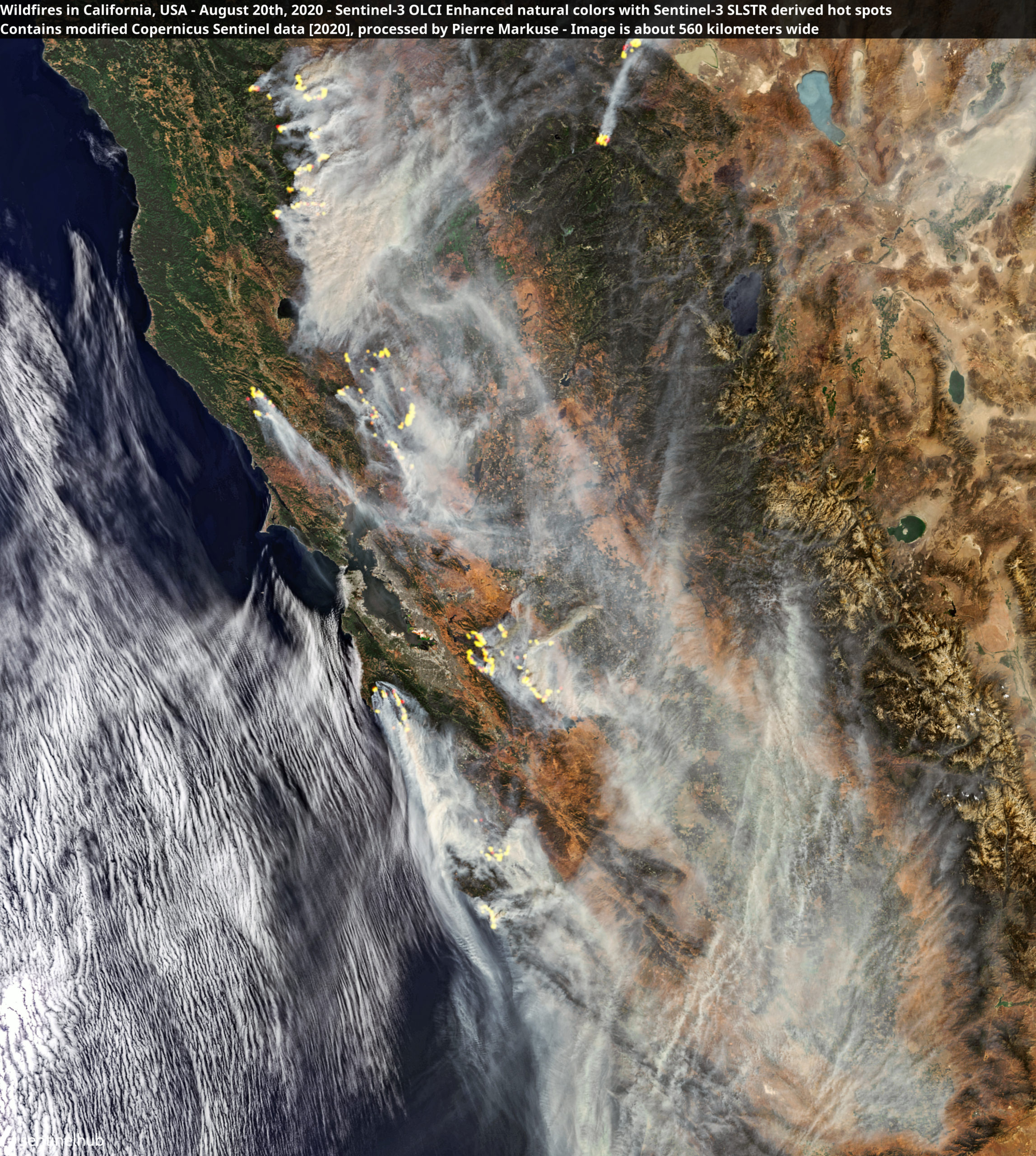Crackling branches
snap in the heat,
as smoke cascades
like filthy waterfalls
across the burning embers
of this heated,
hated land.
An unbottled genie
launched into the aether
with unkempt rage,
and who having
tasted freedom
can never return
to the lamps
that we rubbed
on distant shores
and connected climes.
Breathlessly we trace
his trail across the sky,
the remnants of his rage
dispersed in clouded columns
until all that remains
is the broken, heavy shadow
of his glazed and amber light.
This poem is inspired by recent research, which has found that Californian wildfire smoke reached Europe in 2020, causing a strong cloudiness of the sun.
The 2020 California wildfire season was characterised by a record-setting year of wildfires that burned across the state of California. By the end of the year, nearly 10,000 fires had burned over 4.2 million acres, which equates to more than 4% of the state’s entire landmass. In early September 2020, a combination of a record-breaking heat wave, and favourable wind conditions sparked more fires and explosively grew the active fires, resulting in California’s largest ever recorded wildfire. As well as decimating local wildlife and leading to large-scale pollution over the state, the smoke from these wildfires was also observed as far away as continental Europe, where hazy days were reported despite cloudless skies.
In this new study, researchers were able to confirm the origin of this smoke as coming from the California wildfires, resulting in an unusual atmospheric composition that was particularly striking at sunset with a distinctive milky-yellow light. By using measurements from the Atmospheric Laser Doppler Instrument (or ALADIN) onboard the Aeolus satellite, coupled with ground-based measurements and computer simulations, it was shown that the heat from these extreme forest fires transported the smoke to high altitudes, where it was then transported with the jet stream across North America and the Atlantic to Europe. The frequency and intensity of fires in California continued to increase during the first week of September 2020, and due to the prevailing winds, the travel time of the smoke from the West Coast of the United States to Europe was only about 3 to 4 days. On the 11th of September 2020, an extraordinary plume of smoke from the Californian forest fires was measured over Leipzig, Germany simultaneously from both the ground and space, with the smoke layer appearing at an altitude of around 12 kilometres in the morning, sinking to an altitude of around 5 kilometres by the end of the day. As well as highlighting the potential for satellite measurements to track plumes of smoke across the globe, this research also demonstrates the impact that extreme fire events can have on atmospheric composition and pollution thousands of miles from the fires themselves. `
Discover more from The Poetry of Science
Subscribe to get the latest posts sent to your email.

This is one of your recent best. Sam. I was no longer living in the north of the state when the terrible fires began, and by autumn I had moved across the country, leaving my home of four decades. To see the destruction has been agonizing. Your poem truly captures some of the horror of what global heating is doing to beloved landscapes and ecosystems everywhere. Thank you.